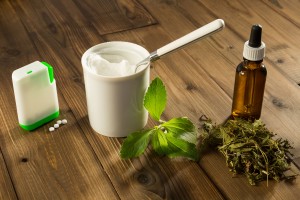A report about gluten free food is circulating in the media based on this publication. It points out that gluten-free food is not as healthy as the companies want you to believe it to be.
Wheat is the source of gluten, so rice, potato, corn and sugar are used to replace wheat. Corn is deficient in niacin leading to B3 deficiency; and the amino acids lysine and tryptophan (missing in corn) are needed for production of serotonin in the brain, which prevents you from getting depressed.
The reference cited above points out that rice can be contaminated with arsenic, which is a toxin.
Gluten-free food is a special form of processed food. Any processed food is not as good as natural food that you buy from the periphery of the grocery store.
So, what do we know about gluten sensitivity?
Causes of increased diagnosis of gluten sensitivity
Only 1% of people are gluten sensitive at this point. Just 30 years ago this number was 0.025%. 10 years ago 0.04% of people were thought to have gluten sensitivity. The difference may be due to improved sensitivity of the testing methods. But another factor is the new wheat, called Clearfield wheat, which was obtained through chemically forced hybridization of wheat resulting in significant genetic modifications from the original wheat. This type of wheat is now grown all over the world. As I explain in this blog Clearfield wheat has a significantly higher percentage of gluten, which likely contributes to the increased gluten sensitivity in the population at large and particularly among patients with irritable bowel syndrome (IBS).
Irritable bowel syndrome and other food sensitivities
According to Ref. 1 among patients with irritable bowel syndrome (IBS) 4 to 5% have true gluten intolerance (celiac disease). In the general population (without IBS) the gluten sensitivity percentage is less than ¼ of that. On the other hand lactose intolerance in the US is found in 25% of all adults and in 35% to 45% of IBS patients. Another common food sensitivity is fructose and sorbitol intolerance, which occurs in about 40% of patients with IBS and about the same percentage in non-IBS controls. This means that if you leave out sorbitol and fructose, about 40% of people will find relief from abdominal cramps or bloating. A common item that people chew on, according to Ref.1 is sorbitol-containing chewing gum. If this type of chewing gum is eliminated, 40% of people will feel better in their gut. So, keep in mind that the majority of people with food sensitivities do not have gluten sensitivity, but lactose intolerance and allergies to fructose and sorbitol.
Other manifestations of celiac disease
Celiac disease is not only a disease that manifests itself in a skin rash (as originally described in celiac patients). It is responsible for a significant amount of ADHD (attention deficit hyperactivity syndrome) or ADD (attention deficit syndrome) and can even cause Parkinson’s disease. It stands to reason that these conditions can be improved with an appropriate diet.
Gluten-free foods often contain problematic replacements
When you go to a grocery store or health food store and look at their gluten free shelves, they offer you an array of products like gluten-free bread and bakery items, cereals, cookies, pastas and many other processed foods. As explained above wheat is the main source of gluten and when you replace it, the substitutes are rice, tapioca starch, quinoa, potato, corn and sugar. We already pointed out some deficiencies of corn. There are also concerns of toxicities as in rice, particularly if it comes from imported material (arsenic). As the majority of people with food sensitivities are allergic to milk sugar (lactose), fructose and sorbitol, these items have to be screened carefully by reading all of the details on the food labels of the products. If you suspect other food allergies, see your primary care physician doctor for testing to these allergens and also have several of the gluten sensitivity tests done. If the gluten sensitivity tests are all negative, you only need to pay attention to milk sugar, fructose and sorbitol, particularly, if you have been diagnosed with IBS.
Hidden sugar and starch content of gluten-free food
What has not been mentioned so far is the sugar and starch content, which eventually leads to higher calories. Sugar is easy to spot on the food label as this is usually listed clearly. I stopped buying dark chocolate, even the 85% variety as they are selling me 10 grams of sugar in a 40 gram helping (25% of sugar). All the health benefits are no longer applicable when you consume that much sugar with a supposedly healthy food item. So add up the sugar you are getting and add up the calories you are seeing listed. Usually, if the sugar content is high, the calories are high.
As an example, when you research on Google regarding gluten-free corn chips, the food content of a typical product is listed as follows: 12 chips (28 g) contain 0 g glucose, 7 g fat, 14 g carbohydrate, 4 g protein, 100 mg sodium and 250 mg of potassium. It also lists that the total calories are 140, of which fat contributed to it 60 calories. 78% of the 80 calories left (namely 62.4 calories) came from the carbohydrate (starch in corn) and 22% of the remaining calories were protein derived (this I had to calculate). As the stomach digests the corn chips within half an hour into sugar, you really have eaten 62.4 calories from sugar. The Internet tells you that 2.3 g of sugar from a sugar cube are the equivalent of 9 calories. Our “sugar math” can be completed by doing this: 62.4 / 9 x 2.3 g = 15.94 or 16 grams of sugar. So, the food industry actually lied to you by saying that there was 0 g sugar in the 12 corn chips. What happened is that your body digested the 14 grams of carbohydrates and converted it into sugar, which was absorbed into your blood stream. Your pancreas could tell you a story, because it had to produce insulin to keep your blood sugar level in balance!
You may wonder how I solved the dark chocolate problem, which by the way would double as a gluten-free food: You buy 100 % unsweetened Baker’s chocolate (0 g sugar on the label) and liquefy it in a little bowl in a pot with hot water. Add a tiny bit of stevia sweetener and add a tiny bit of vanilla extract into the well-stirred chocolate liquid. Prepare a form out of aluminum foil with a rim. Pour the content carefully into this (watch it, hot!) and let it sit to cool down. When it is at room temperature, cut into smaller pieces, which you keep in a glass jar. This is 100% gluten-free chocolate, 100% chocolate and 100% healthy.
Conclusion
Not all is well in the gluten grocery row of your friendly super market. There are problems in that 20 to 25% of people believe they may have gluten sensitivity when in reality only 1% have it. But the majority of people have not done a gluten-screening test, which would confirm that they have indeed celiac disease. As pointed out above, it is much more likely that a food sensitivity may be caused by another offending agent rather than gluten (milk sugar, fructose and sorbitol). Avoiding the offending food components is the treatment protocol.
Those who take in gluten-free food will expose themselves to unnecessary toxins, to extra sugar leading to obesity and metabolic syndrome that leads to premature heart attacks and strokes. For those who do need to be on a strict gluten-free diet, they can safely do so by following a strict gluten free diet at home (preparing your own meals from healthy ingredients), preferably with organic foods. There are many websites that you can find online that have meal suggestions.
More information about celiac disease.
References:
1. Rakel: Integrative Medicine, 3rd ed. Patrick J. Hanaway, MD: “Chapter40: Irritable Bowel Syndrome. Integrative Therapy”. Copyright 2012 Saunders, An Imprint of Elsevier
Last edited Nov. 25, 2014







